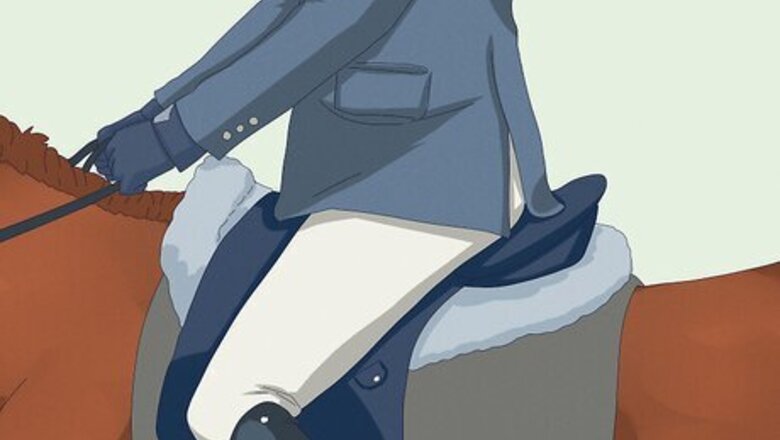
views
X
Research source
The half-halt slows your horse's front end momentarily, while the back end continues at pace; the horse's frame compacts, creating a topline arch in which his balance is on the haunches rather than the forelegs. This shift in balance "wakes" the horse and makes him more responsive to signals from you (e.g., for a turn, a change in gait or speed, etc.). Timing is crucial to coordinate your aids, so you may find it best to learn the half-halt in stages. Ultimately, the half-halt differs slightly from rider to rider and horse to horse – have patience and consult our "Troubleshooting" section to help correct common problems.
Executing the Half-Halt
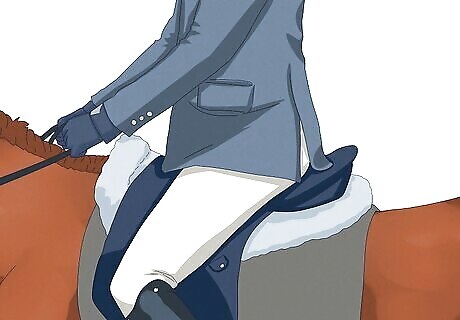
Sit tall and deep in the saddle. Your body should be flowing with the movement of the horse's, rather than holding stiffly. Relax your shoulders up and back. This way, the horse can more easily sense signals from the seat.
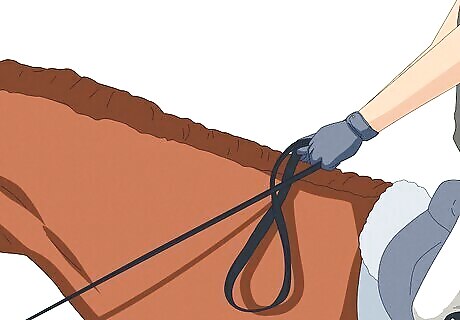
Use your rein aid. When you're first learning the half-halt, it's likely you'll use your hands more than when you get accustomed to the signal. Let the signal be very slight: turn your wrists in to increase contact with the bit. Do not pull on the reins. You'll probably notice the horse lighten the bit and stride more evenly – however, this is most likely not a true half-halt (where the pace is maintained in the hind legs), but rather a disengagement of the hocks and consequent disruption of energy. If the horse hollows his back and raises his head, these are also signs that you need to continue to adjust your signal by engaging other aids.
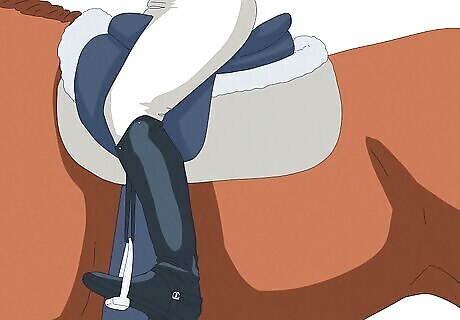
Lengthen your legs slightly. This signals the horse to deepen his hind-leg step.

Create a slight resistance in your seat to suggest a halt. Briefly tighten your lower back muscles and squeeze your rear end, as though you were sitting on a swing and propelling yourself forward. If your elbows are hanging at your sides, the slight change in your back should travel through your arms into the reins, giving the horse enough of a signal that you do not need to manipulate the reins at all.
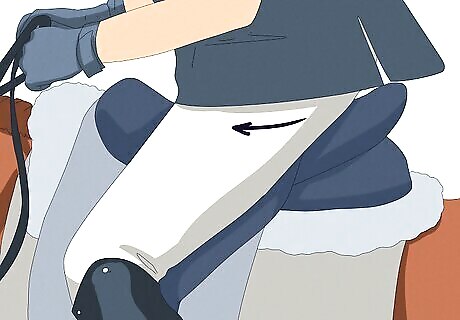
When the horse shifts down, apply your driving aids. Once you sense a bit of "halt," signal to him to keep moving steadily forward. You may do this primarily with your seat or leg, or with the two in combination. Push your seat in a forward motion. Apply pressure with your leg lightly at the horse's side. Keeping your legs lightly against the horse's side throughout the half-halt helps ease the transition into driving forward.
Troubleshooting the Half-Halt
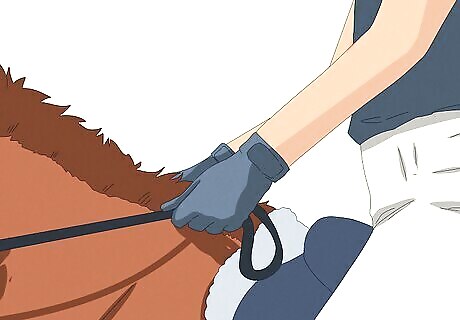
Do not let the half-halt last longer than one stride. Pulling on the reins or bracing for too long against the horse may cause the horse to lean against your hands, rush off, or become unresponsive to your aids. If your half-halt was unsuccessful, try again in another stride, this time with a little more emphasis.
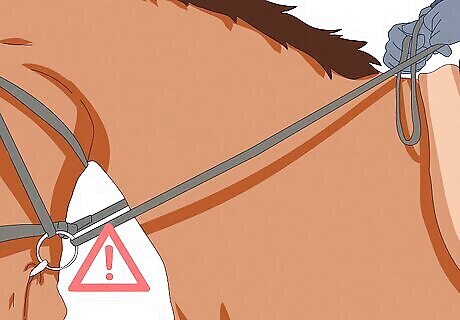
Do not overdo the reins. Remember, most of the half-halt signal comes from the seat and leg aids. You may find you don't need to do anything to the reins at all. If you do, rather than tugging on them, squeeze them gently as though squeezing a sponge.
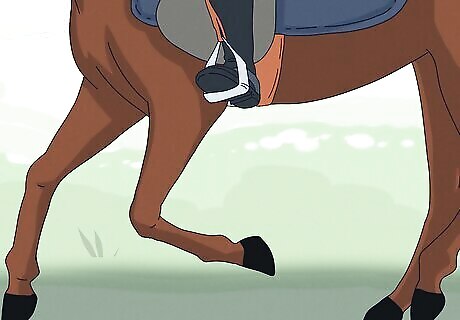
Do not wait too long for the half-halt. Some horses need a half halt in the first strides of their cantor or trot in order to establish the rider's control over the pace. If you wait too long for the half-halt, the horse may have gathered too much momentum to execute it.
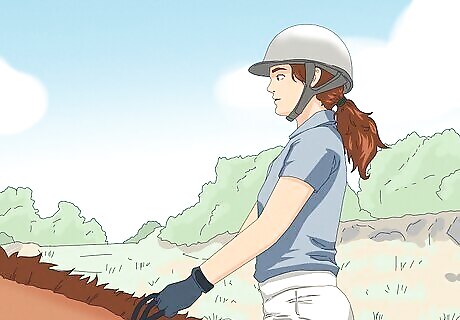
Communicate clearly to the horse with your aids. It's important that you have a precise concept of the half-halt signal and what each aid is telling the horse. Some say the half-halt is like talking to the horse, but you must know what you want to say. In short, "ho and go."
Practicing the Half-Halt
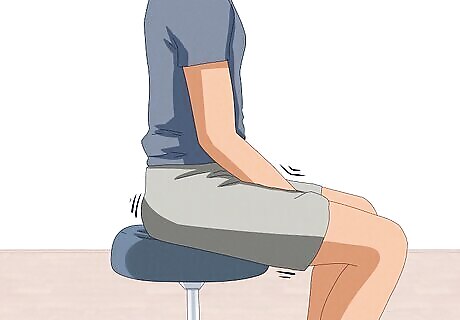
Practice your seat aid at home before trying on the horse. In a seated position, push downward with your lower back and rear end as though you were on a swing and pushing it forward. This helps you get used to the half-halt signal. When you're ready, practice on the horse in a walk: squeeze your seat and apply just a light pressure to the reins. If the horse halts, reward it by gently scratching him and praising him. Keep practicing this until the horse responds to the seat aid with minimal (or no) rein pressure. When you've mastered that, repeat those steps from a trot. If the horse is confused, you can return to the walk-halt exercise to reinforce the meaning of the signal.

Build the horse's expectation to halt through with a trot-to-walk exercise. This simple exercise can help make the half-halt signal clear. In a way, both you and the horse are learning at the same time. In a dressage arena, ask for a transition from trot to walk at A, E, C and B. Walk a few strides only, move back to a trot. Repeat this for a few circuits. The horse will quickly learn the pattern and expect to slow down at the given letters. Next, at those letters begin to ask for a transition to walk, but at the last minute change your mind and stay in the trot. This method lets you give a small suggestion of half-halt, and since the horse is expecting the signal, he is likely to respond. When you tell him to continue, he'll rebalance and move forward.
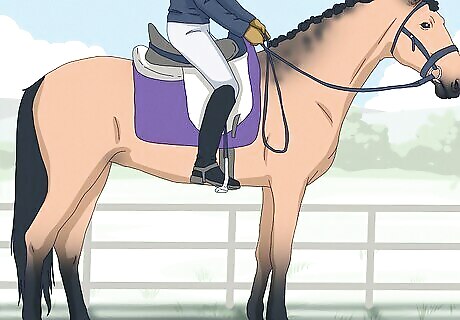
Evolve your half-halt signal from a halt. Like the above exercise, this builds the horse's expectation of a change, this time working from a full halt. Try this if your horse doesn't respond to the exercise in Step 2, or use the two exercises in combination. Signal a full halt and let the horse rest for two minutes. Trot about 40 yards (37 m), then signal another full halt, resting again for two minutes. After trotting another 40 yards (36.6 m), start your halt signal, but as soon as you feel the horse shifting downward, drive him forward.














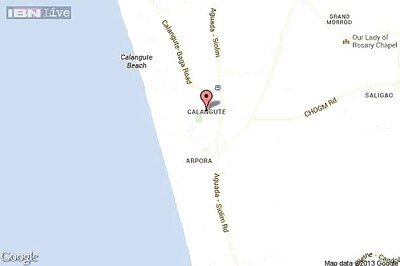
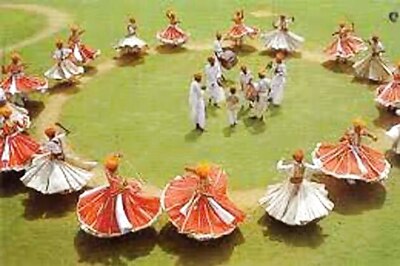

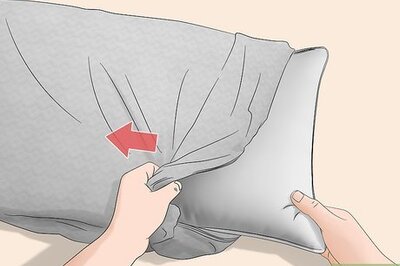
Comments
0 comment